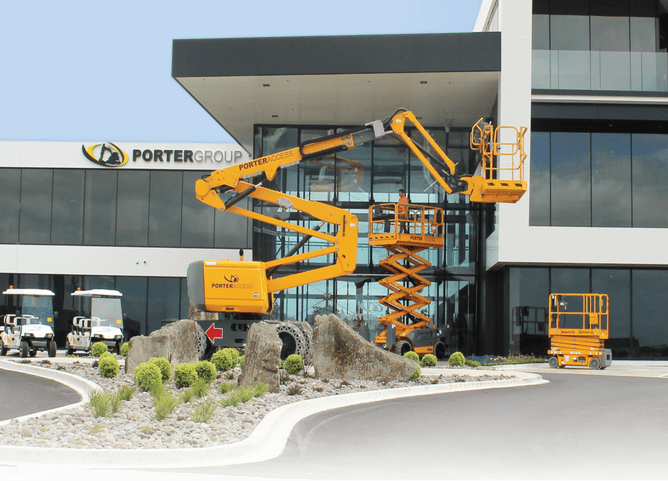Hamilton-based Porter Group is New Zealand’s largest supplier of new and used earthmoving and construction equipment. They proudly boast the highest sales of new excavators and wheel loaders since 2005, and the largest rental fleet in the Southern Hemisphere. The Group owns 50 retail locations across New Zealand, Australia and Southern California.
From sales and hiring capabilities through to servicing, the Porter Group of companies offers machines and parts for construction, mining as well as heavy haulage transport services.
Business critical
Responsiveness to a sometimes unpredictable customer demand is the key to Porter Group’s success. As the organisation continues to grow nationwide and internationally, it needs to constantly innovate to ensure its communications and supply chain are operating with optimum efficiency.
Business challenges
Porter Group’s legacy inventory and order management system was a character-based system, supplemented by manual processes such as interbranch faxing. As the organisation expanded, it now manages some 22,000 inventory items, this proved unable to keep up with demands.
Not only did the core system become inefficient, but it was unable to communicate with other internal systems such as the company’s hire system. Further, it had poor integration with Microsoft Office, which hampered users, as few of the company’s employees are experienced computer users.
“Porter Group has founded its reputation on the superior know-how of our staff, and we largely hire from the field and promote from within,” says Anne Purnell, Porter Group’s administration manager. They’re not computer buffs, but that’s the way we like it. We want these experts focusing on what they do best, not on deskbound administrative tasks.”
The existing system was not easily customised to meet emerging business requirements, and it offered weak report writing options, which undermined strategic analysis, planning and innovation.
A Sage business choice
With assistance from systems integrator, Business Enabling Services (BES), Porter Group chose to deploy Sage 300 ERP. The system was fully interfaced by BES to Porter Hire’s rental system and customised with a range of macros to support specific needs such as custom item enquiry screens and inter-branch stock requisitions.
Initially, the system was rolled out to 20 users in key North Island offices, then to another 30 users in other North Island offices. The system was also deployed at Porter Group’s Brisbane-based subsidiary, running from the New Zealand servers via a communications link to Australia. At this point, given the large user numbers and transaction volumes now being handled by Sage 300 ERP, the system was transferred to the SQL Server database platform.
The next step was for the organisation to implement Technisoft’s Service Manager in its workshops and to track service and warranty information on sold machines. Purnell says the Porter Group was impressed with the combined user-friendliness and sophisticated functionality of Sage 300 ERP.
“We were also impressed with BES: they never said ‘no’ to any of our customisation requests,” she adds.
Sage benefits
With its superior reporting, and easy-to-operate import/export capabilities, the system has given Porter Group vastly improved visibility of its business. The company is also benefiting from the tighter inventory control essential for faster order fulfilment and stock replenishment.
Sage 300 ERP’s reporting functionality has significantly accelerated accounting activities such as reconciliations and invoicing.Each of these tasks used to take up to four days a month, and have been reduced to less than a day, which has improved cashflow control.
“It’s great: Sage 300 ERP does everything but stuff the invoices into the envelopes!” says Purnell. “With its integrated inventory control, sales orders and purchase order modules, Sage’s system has enforced quality processes, and helped us become a strategic distribution business.”
Previously Porter Group’s monthly administration tasks used to take four days, but that’s down to less than one with Sage 300 ERP system.

